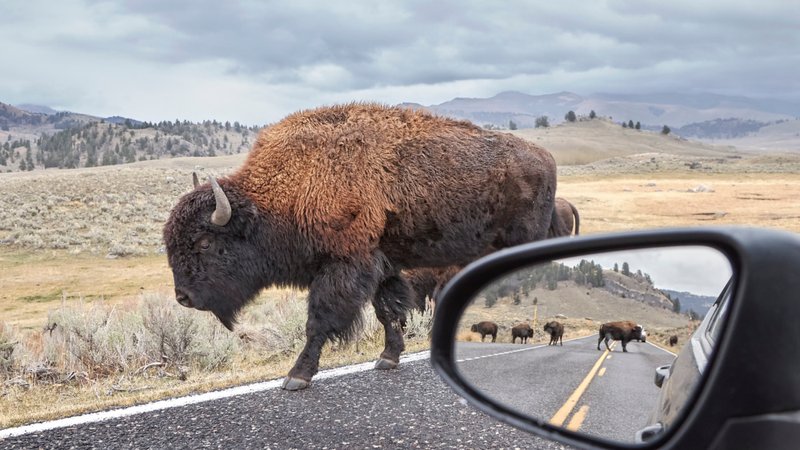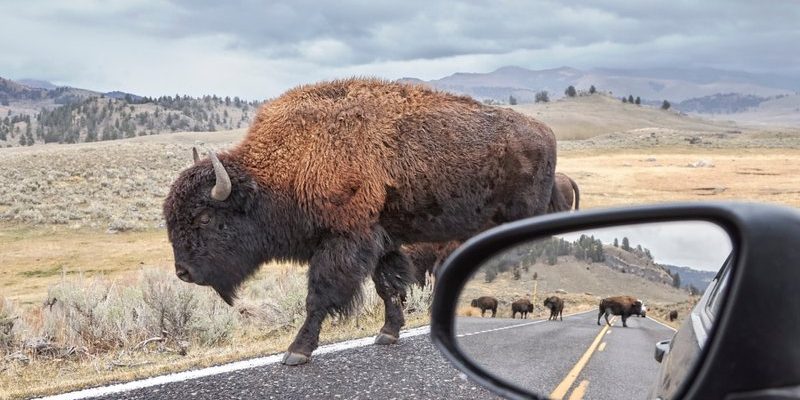
Honestly, bison encounters aren’t just about the bison itself. They’re also about you—how to keep yourself safe and respect the animal’s space. Understanding their behavior, knowing how to react, and taking precautions can help ensure a peaceful coexistence. So, let’s dive into some practical steps and tips that will help you handle this unique experience in the wild.
Understanding Bison Behavior
The first step to handling a bison encounter is understanding how these animals behave. Bison are generally calm creatures that prefer to mind their own business, munching on grass and roaming the plains. However, they can become defensive if they feel threatened. It’s a bit like how we might respond when we’re startled by someone sneaking up behind us—our reaction can be unpredictable.
Bison have powerful instincts. If they perceive you as a threat, especially if you’re too close to a mother and her calf, they might charge. That’s why it’s crucial to recognize their body language. Signs of agitation include swishing tails, snorting, and pawing at the ground. If you see these behaviors, it’s best to keep your distance and move away slowly.
Remember, bison are not domesticated animals. They can be as unpredictable as a roller coaster ride! So, respect their space, and give them plenty of room. Ideally, try to stay at least 25 yards away—think of it as a personal bubble zone!
How to React When You See a Bison
So, what should you do if you unexpectedly come across a bison? The first thing is to stay calm. Panicking can lead to quick decisions that may put you at risk. Take a deep breath, and assess the situation. Is the bison looking your way? Is it alone or with a herd?
Here’s the thing: if the bison seems to be relaxed and not paying you any mind, slowly back away from the area. Move quietly and avoid sudden movements. You wouldn’t want to alarm the bison or draw attention to yourself. It’s a bit like handling a sleeping dog—you want to slip away without waking them up!
If the bison starts to move toward you, don’t run. Instead, calmly step away and look for natural cover nearby, like trees or large rocks. This can provide a barrier between you and the bison. Always remember: running can trigger their chasing instinct, and you definitely don’t want that!
Keeping a Safe Distance
Maintaining a safe distance is crucial when you encounter a bison. As previously mentioned, aim for at least 25 yards away. Some parks even recommend keeping a distance of 100 yards if possible. Think of it as a safety perimeter—similar to how you might stay away from a beehive to avoid getting stung.
If you’re in a national park, pay attention to any park guidelines regarding bison sightings. They often have signs warning visitors to keep their distance. This isn’t just for your safety; it’s for the bison’s well-being too. Being too close can stress the animal and disrupt its natural behavior.
If you’re in a situation where the bison is blocking your path, be patient. Don’t attempt to walk past or push through. Give the bison time to move on its own. After all, they’re the ones who were there first, right?
Documenting the Encounter Safely
Many people want to capture the moment when they see a bison in the wild. It’s a unique experience, after all! But it’s essential to do this safely. First, make sure you’re at a safe distance before pulling out your camera or phone. The last thing you want is to get too close for that perfect shot and lose sight of your safety.
When taking pictures, use zoom features on your camera or phone to capture the moment. This way, you can still enjoy photographing the bison without compromising your distance. Plus, it will give you a great view without the need to encroach on their personal space.
Also, remember to keep noise to a minimum. You might be excited, but shouting or making loud noises can startle the bison and provoke unwanted reactions. A whisper might be better suited for this occasion—both for your safety and the bison’s comfort.
Understanding Bison Conservation
Bison are an iconic symbol of the American West and play a significant role in our ecosystem. They help shape the landscape by grazing, which allows for a diverse range of plant life to thrive. This fact might make you wonder why it’s so important to protect them.
Many national parks and conservation programs work hard to maintain healthy bison populations. When you witness these magnificent creatures in the wild, you’re experiencing a piece of living history. Supporting conservation efforts not only protects bison but also ensures they continue to thrive for future generations.
Stay informed about the challenges bison face, such as habitat loss and climate change. By being aware, you can contribute to programs that work to sustain these animals. It’s like being part of a community, where every small effort counts toward a bigger goal.
What to Do After the Encounter
Once you’ve had your bison encounter, it’s natural to feel a mix of emotions—excitement, a bit of nervousness, and perhaps a newfound respect for wildlife. Take a moment to reflect on what you experienced. Was it thrilling? Did it change the way you think about nature?
Sharing your story can also be beneficial. Discuss it with friends or family; you might inspire others to respect wildlife and understand the importance of keeping a safe distance. Moreover, consider documenting your experience through photos or a journal entry. It could be a great way to remember the day and the lessons learned.
If you have the opportunity, consider volunteering for wildlife conservation or supporting local groups dedicated to preserving habitats. It’s a way to give back while continuing your adventure with nature. Who knows? You might find yourself becoming a bison ambassador!
In conclusion, encountering a bison in the wild can be a thrilling experience. By understanding their behavior, maintaining a safe distance, and knowing how to react, you can ensure both your safety and the well-being of these magnificent animals. Nature is full of surprises, and being prepared is the best way to enjoy them. So, next time you venture into the wild, keep these tips in mind, and embrace the adventure!

